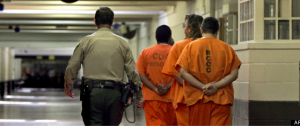The media is having a field day quoting anonymous sources, arguing that an increase in jail violence in California Jails is due to the more violent offenders who would have been placed in prison, and now being placed in California jails under Realignment Reform.
The story is accurate as far as it goes but it doesn’t necessarily go far enough. The combined population In the 10 largest county jails grew 14 percent through 2012 while inmate-on-inmate assaults rose 32 percent and inmate-on-staff assaults rose 27 percent. Clearly a significant increase.
But when you look behind the numbers, you find some obvious and even some unsuspected causes.
1. When you put more offenders in a jail (as in a prison), there will be more violence as the overcrowding causes an increase in tension and violence (remember the experiments with rats in a cage from high school). The fact is that while some jails are experiencing greater violence, jail population is up; prison populations are down and prison violence is down.
“Simultaneously, the state Department of Corrections and Rehabilitation saw a 15 percent drop in inmate-on-inmate assaults within state prisons, while attacks on employees dropped 24 percent as the prison population dramatically declined last year, according to statistics obtained through a separate public records request by the AP.” (NBC News)
2. Jails aren’t designed for long term offenders. If you put those with ten year sentences in a jail (as realignment allows), there will be consequences. But that ignores the very purpose of Prison Realignment. In pre-realignment times, counties dumped their bad boys and girls in state prisons far from home where they wouldn’t have to deal with them for as long as the county judge sent them up for. It was a free ride, the state picked up the tab and a lot of counties took full advantage of that. Realignment is bringing accountability and financial responsibility back to the sentencing county where it ought to be.
3. Following up on Point 2, Realignment was designed to encourage county judges to split prison sentences and use alternatives to incarceration whenever appropriate. Those sentenced to prison, yet placed in county jail (I know, it can be hard to get a hold of that concept), would receive a portion of the sentence in jail and the rest in what is euphemistically called “mandatory supervision”, (another way of describing probation for the serious offender). What was envisioned was judges using split sentencing to transition offenders from jail into the community under supervision, where alternatives to incarceration would be available to the offender The last statistics I’ve seen suggest that the courts are not up to the task. Except for some outstanding exceptions (Santa Clara, San diego, and a few more), sentenced prisoners get straight jail sentence more than eighty percent of the time. And when a judge does that, the sentence is final, and the offender remains in jail for the full term.
So when you read about how California Realignment isn’t working, it’s a good idea to read down to the bottom of the article, for a fuller picture “Sacramento County was the only one to see a decrease in inmate-on-inmate assaults, while Alameda, Los Angeles and Santa Clara counties saw declines in assaults on staff.”
This is a work in progress that many would like to roll back. While Realignment is unlikely to go away, the big push is to build jails that are virtual prisons. Watch for it.


